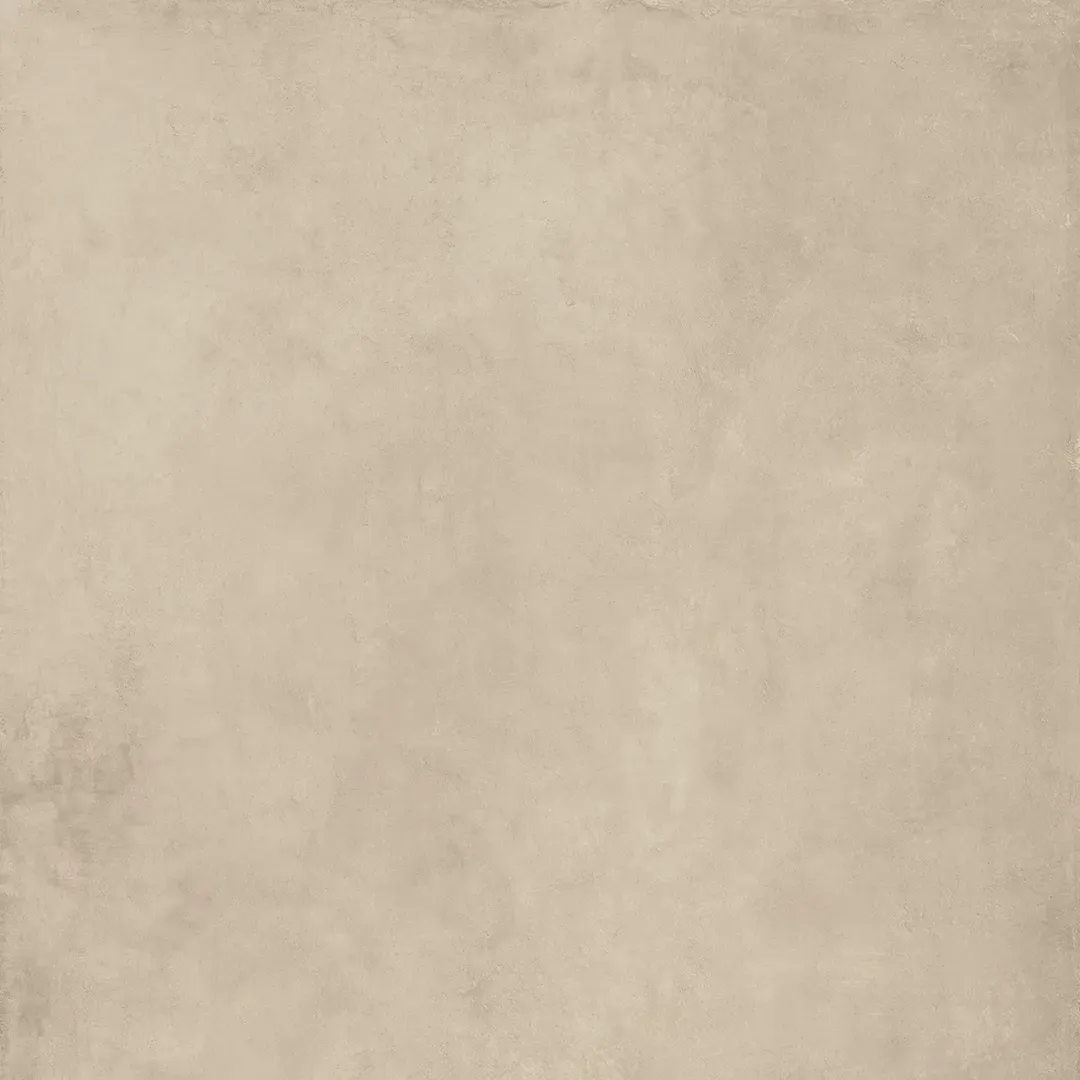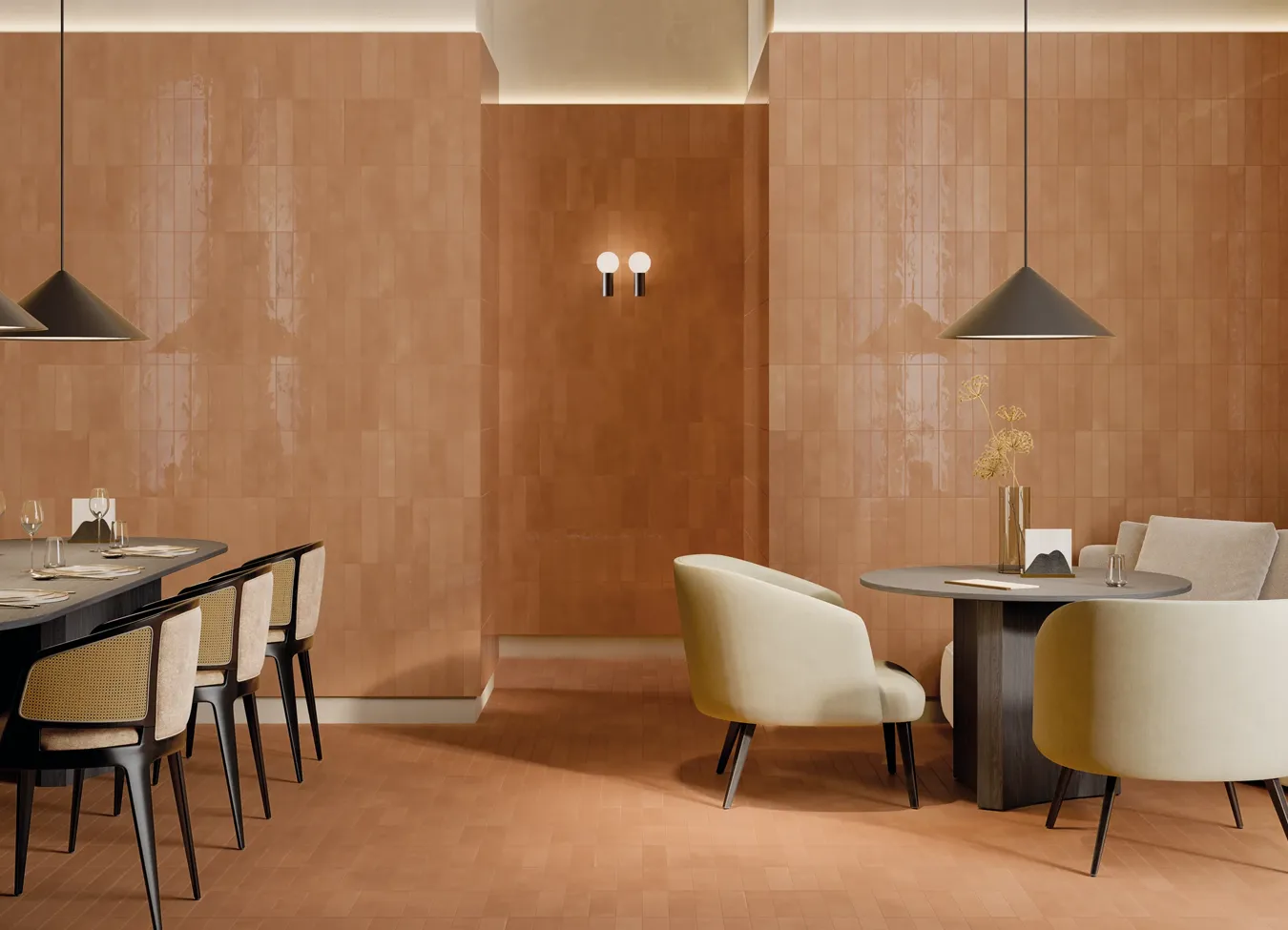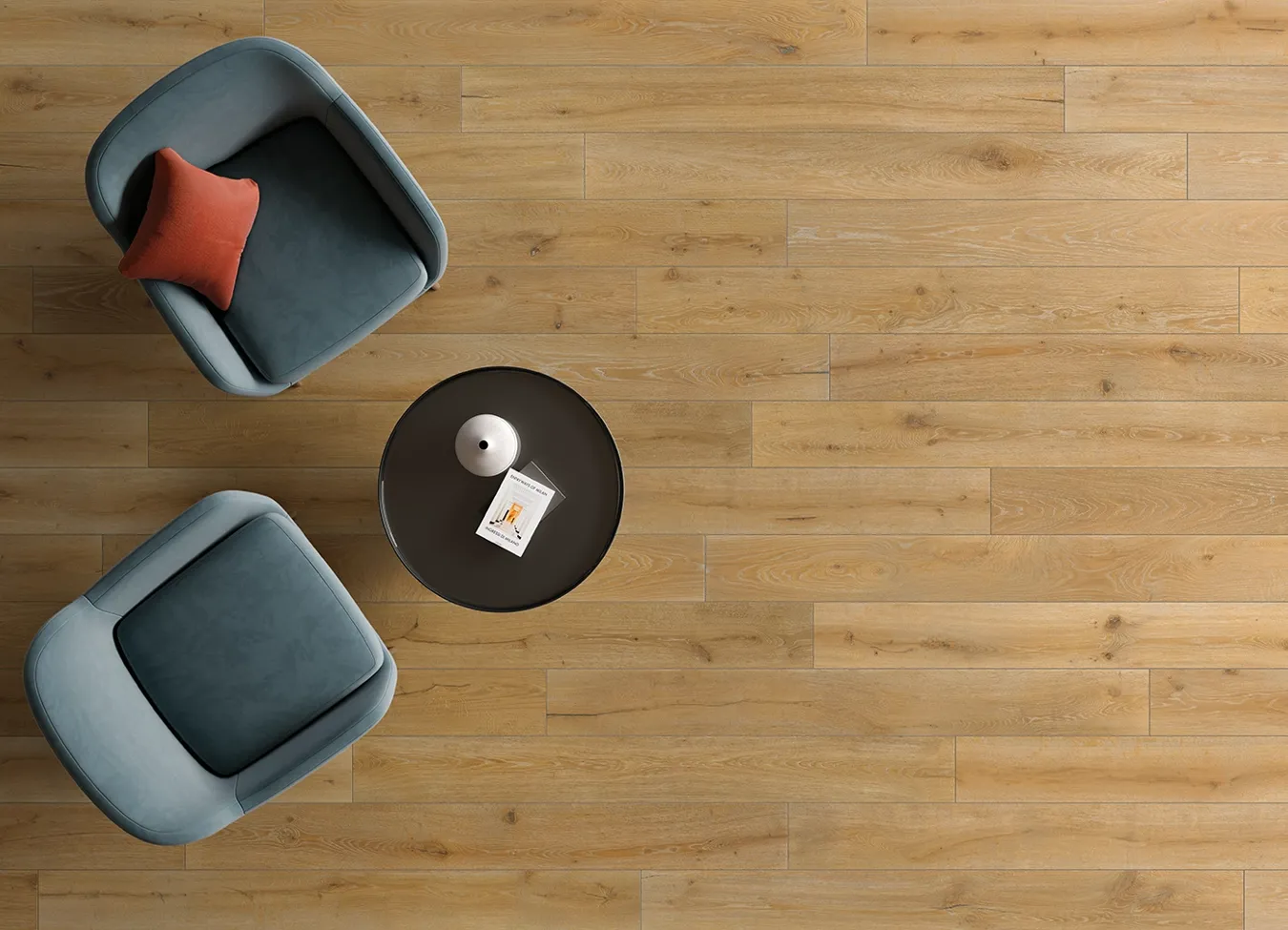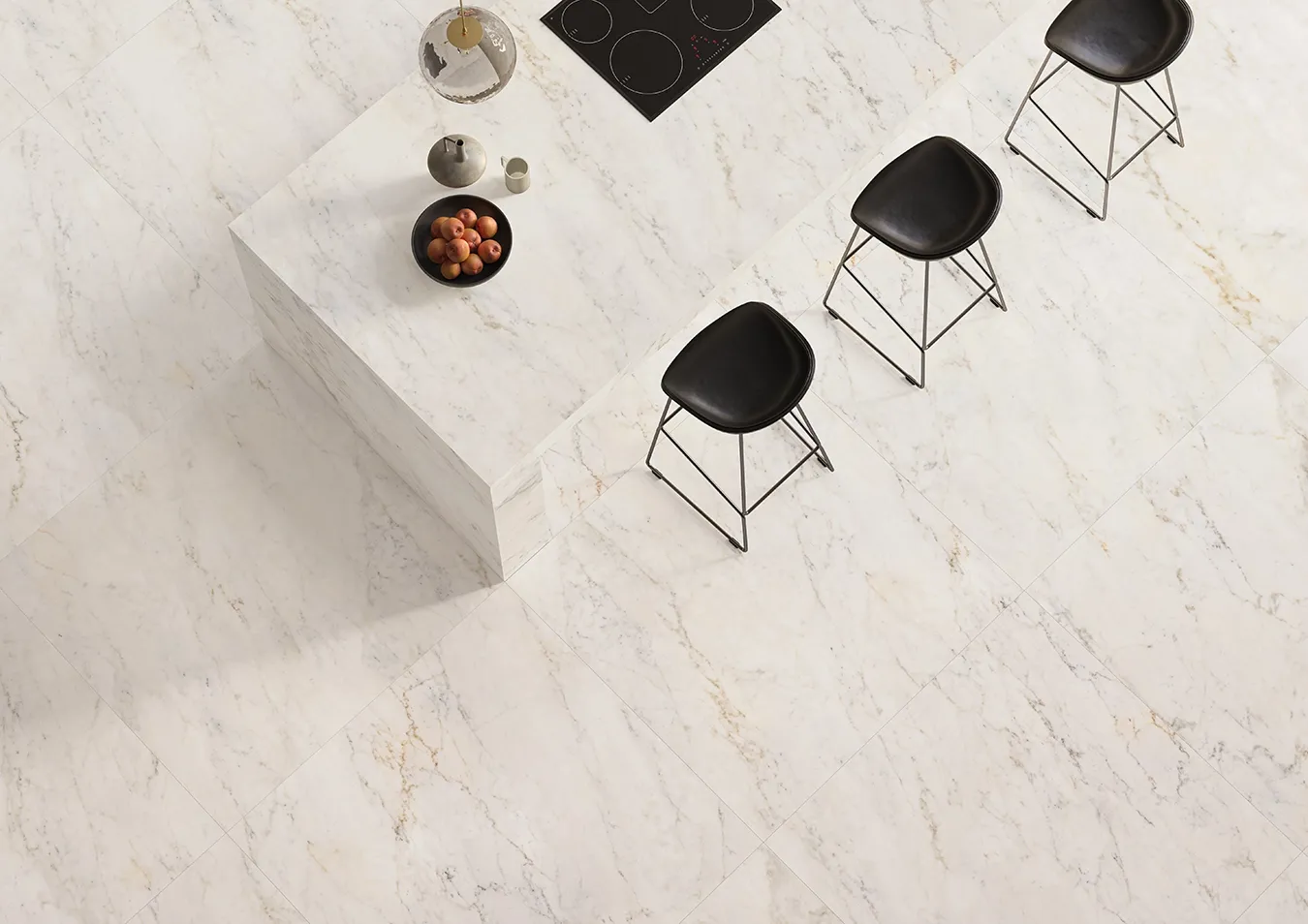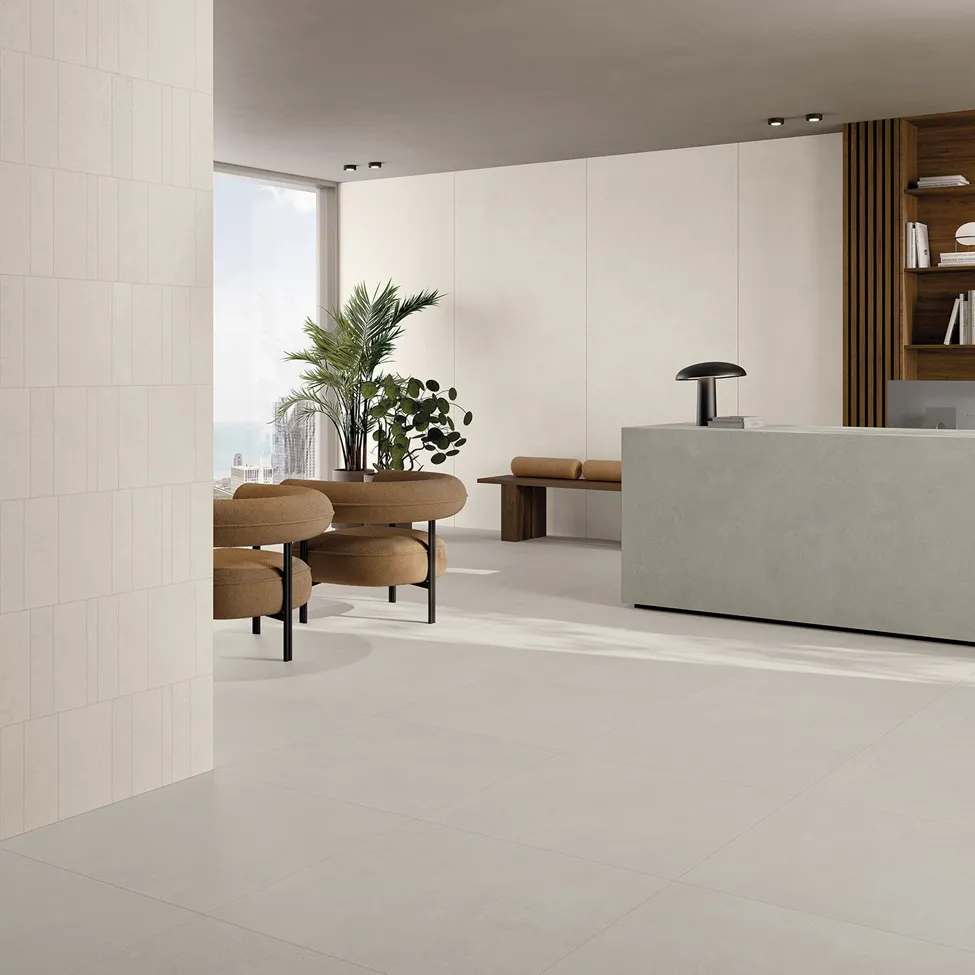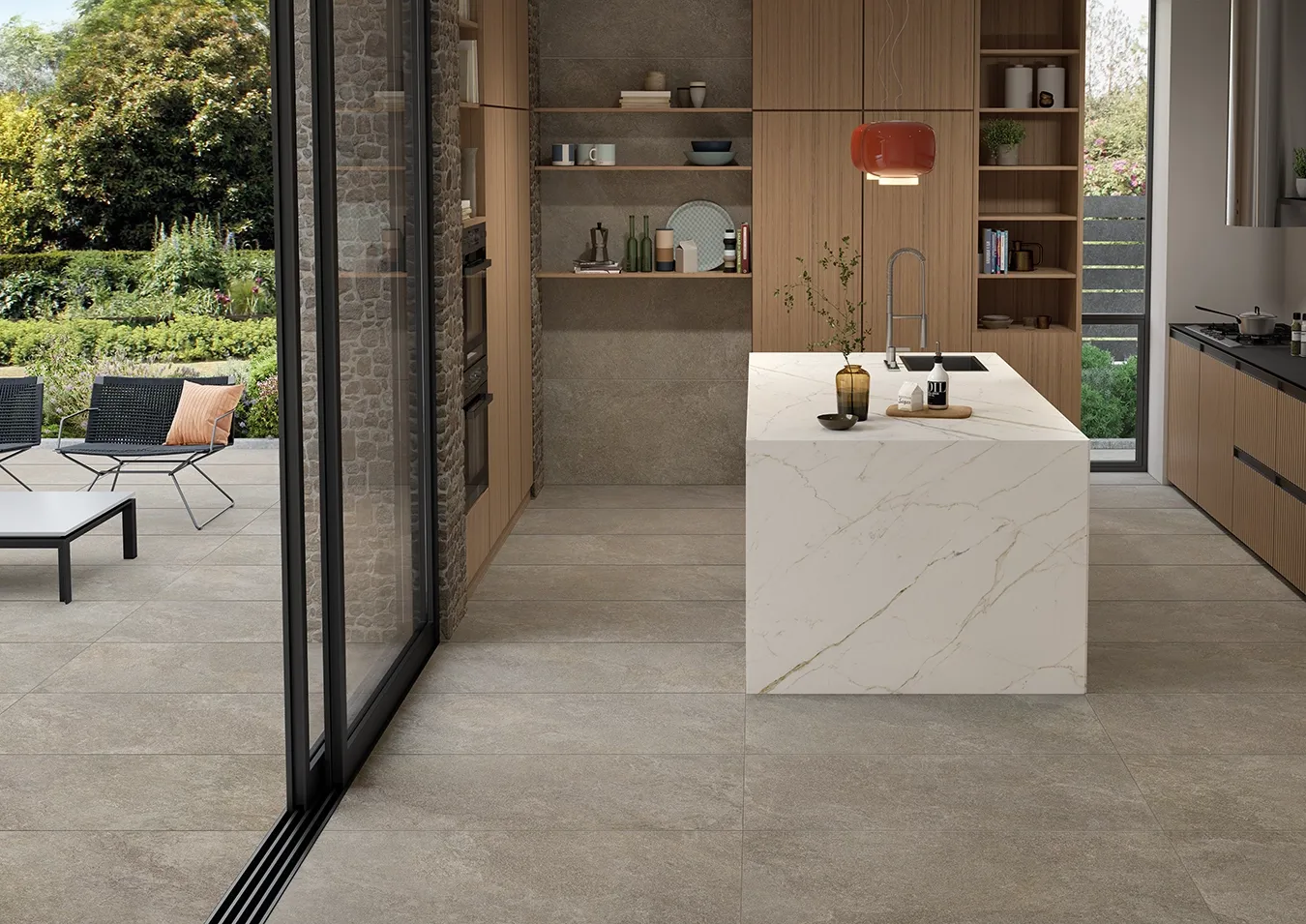High contrast combinations for bold geometric effects
Dark grout with light tiles, or light grout with dark tiles, emphasizes the grid pattern and makes each tile distinct. This approach works particularly well with geometric layouts like herringbone or chevron, where the pattern itself becomes a design feature. The contrast draws attention to the tile arrangement and adds visual texture to walls and floors.
Tone-on-tone for seamless surfaces
Matching grout color closely to your tiles creates visual continuity. The surface reads as unified rather than segmented, which makes spaces feel larger and more open. This approach suits contemporary minimalist designs where clean, uninterrupted surfaces are preferred. Light grey grout with light grey tiles, or beige grout with beige tiles, allows the material quality and subtle variations within the tiles to take center stage. The seamless effect works especially well with large format tiles, where fewer grout lines already contribute to a sense of spaciousness.









